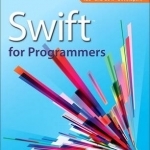
Your Colour App
Shopping and Lifestyle
App
Do you have clothes in your wardrobe that you never wear? Do you waste money on clothes that...

Swift for Programmers
Harvey Deitel and Paul J. Deitel
Book
The professional programmer's Deitel(R) guide to Apple's new Swift programming language for the...

Notebooks for iPhone
Productivity and Business
App
This is the "iPhone only" version of Notebooks. If you want to run it on your iPad, too, you might...

SPLnFFT Noise Meter
Utilities and Music
App
SPLnFFT is a sound level meter (noise meter) for your iPhone or iPad with many advanced features:...

Tracks4Africa Guide
Reference and Travel
App
Welcome to the most detailed travel guide for overland travel in Africa. This offline app offers a...

Create Apps Without Programming!
Business and Productivity
App
This guide is about how to effectively outsource app development. It does not create apps for you. ...

Free HD Compass
Navigation and Utilities
App
The best and unique free High-definition compass for iPad and for iPhone! Simple beautiful rustic...

Yum Cha Dim Sum (Food_Hong Kong)
Food & Drink and Lifestyle
App
Yum Cha Dim Sum Pocket Guide (English-Chinese version) [ 飲茶點心 (中英文版)...

InMyBar - Drink & Cocktail Recipes
Food & Drink and Lifestyle
App
InMyBar is the best drink & cocktail app available because it can tell you what you can make with...

Boat Beacon
Navigation and Sports
App
Boat Beacon is an AIS receiver for your iPhone and iPad. It is the only AIS ship tracking app to...